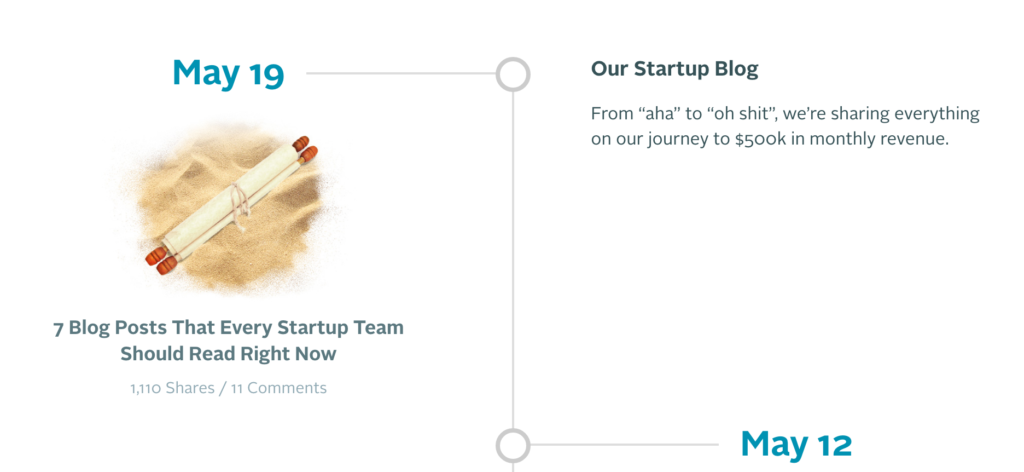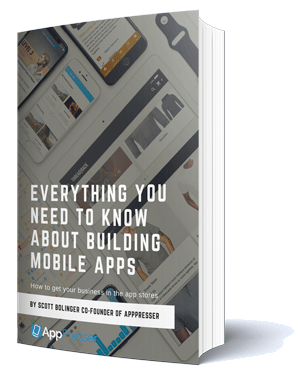Product Launch Mistakes


The first product I created and launched was a WordPress theme for fitness professionals.
I had worked for a fitness company as their in-house designer for a few years, and learned a lot about the fitness world. I was still in contact with my former boss, and he agreed to help me promote the theme to his (fairly large) audience as an affiliate.
We launched the product and it did well. I can’t remember the exact numbers, but it was a 4-figure per month product for years after that. Not bad!
I went on to launch other products with varying success, including more than one that completely fell flat. I have also launched 2 SaaS products and multiple plugins, obviously including AppPresser.
I’m not a product launch expert, but I’ve done it enough times to know a few things. I’ve certainly made my fair share of mistakes.
If you are launching a product for the first time, I can almost guarantee you will make one of these mistakes. Even if you read this article – and 10 other better articles – and tell me you learned all of these mistakes and you won’t make them…you’ll still make at least one of them.
I know because I’m guilty of it myself.
Let me share what I think are the biggest mistakes you can make, and hopefully you can do better than me and avoid them completely.
Mistake 1: All Building, No Marketing
One of the easiest mistakes to make: not knowing who is going to buy your product and how to reach them.
Many of us as developers get excited about an idea, or a problem we can solve. We rush to build the product, and focus only on the technology, and making sure we write perfect code.
We build and test and tweak, and get really excited about how well it works. We figure when the product is ready, we’ll build a website and figure out some sort of marketing plan.
We get excited about the potential this product has, and how many thousands of dollars we are going to make. We launch the site and…
Nothing happens.
Weeks go by, maybe a few sales here and there, nothing spectacular. Guess you can’t buy that Lamborghini after all 🙁
This story is all too common, and I guarantee it’s happened to every entrepreneur.
What is the alternative?
Know exactly where your traffic is going to come from BEFORE you launch.
Start with who is going to buy your product. Is it developers? Store owners? WordPress beginners? Enterprise level companies?
If you are selling to “anyone,” you will find no one. Figure out who your ideal customer is, and find out exactly where they are and how to reach them.
If you are selling to restaurant owners, find out where they are and who is already in contact with a lot of them. Make that person your affiliate, or figure out a way to build an audience of restaurant owners yourself.
Is there a blog that all restaurant owners read, or a convention they all go to? Find out how to get on that blog, or get a booth at that convention.
If you are in this long-term, you should figure out how to build your audience on your own. Starting a blog before you have a product (or even an idea) is fantastic. Copyblogger and QuickSprout both started this way. They built an audience, then asked them what they wanted to buy.

Groove started their blog after they already launched, but made it so incredibly good that it is their #1 driver of new sales. The blog has nothing to do with their product, they never pitch or sell, they just write really good content.
Content marketing is a long game, it takes several months to see any traction. It creates consistent traffic over time, and if you keep it up it grows like a snowball.
I’m not a marketing guru, I can’t tell you how to “build a massive audience in 30 days or less.” All I know is that you need to figure this out way earlier than you think you need to.
If you don’t work on your marketing before launch, don’t be surprised when the sales aren’t rolling in.
Mistake 2: Me-too product or marketing
If you don’t do anything different, it’s really hard to get attention.
When we launched AppPresser, it brought in 5 figures in the first 2 weeks, and has been growing ever since.
We didn’t have any affiliates, and we didn’t have a blog or a big email list. The only thing we had was a product that was new and different.
People were excited about AppPresser, and they wrote articles about us and shared on social media. I think much of our success has hinged on the fact that we did something different.
I’ve launched other products that were not as exciting and different, and it’s like pulling teeth to get anyone to care. Marketing a product that’s not different is an uphill battle, and always will be.
Even if your product isn’t different, maybe you have a unique feature that puts a new spin on it. Maybe your marketing is what people will notice, because you write insanely detailed tutorials or guides.
The point is to think outside the box, and do it early on. If you don’t have anything different to offer people, you’re going to have a hard time.
Mistake 3: Trying to be Perfect
The worst thing you can do is never launch because you are trying to be perfect.
Don’t try to be perfect.
Even though this article is about mistakes you should avoid, it is better to make all of these mistakes than not do anything.
Is it the end of the world if you launch without an audience? No.
You have to start somewhere, and launching without an audience is better than not launching at all. At least you have a live product to show off when you talk to people about being an affiliate or promoting you.
Can a me-too product with no marketing succeed? Eventually, yes.
You can correct course and even pivot after launching, and you can start marketing at any time. You might find a unique marketing angle or product feature after getting feedback from customers.
I didn’t learn how to sell products by reading articles, or by trying to be perfect. I learned from making my own mistakes.
Bonus: Other People’s Mistakes
Those are a few of my mistakes, what about other people? I asked a few of my friends to weigh in.
Brian Krogsgard of Post Status launched a membership club and has seen a lot of success. He warns us not to overpromise:
Matt Medeiros of Slocum Studio says his biggest mistakes are:
Sometimes you launch a product and nothing happens, and it can be discouraging. You are tempted to chalk it up as a failure and just move on. The truth is that most products don’t succeed without a tremendous amount of early effort. It’s like pushing a boulder uphill, it may take a while, but don’t give up.
Tony Perez of Sucuri Security says to make sure you get your pricing right:
There are pros and cons to monthly and annual pricing, it’s important to know what they are. Monthly payments may sound great on the surface, but cancellations and expired credit cards can decrease your customer lifetime value. It might be better to charge $500 once than to charge $29/mo. You probably won’t get it perfect right away, but at least do the math and make the best decision you can when you launch.
Cory Miller of iThemes brings us back to what really matters, your core motivations.
When launching a product, it’s important to consider your long term goals and motivations. If you launch a product that you don’t like just for the money, you will definitely regret it later when you are up to your ears in support and maintenance.
It’s great to learn from the mistakes of others, but the important thing is to get out there and give it your best shot. Even if your first launch is a complete failure, you will learn what to do better next time.
What’s your biggest product launch mistake? Let me know in the comments.






Nice tips. Learning from mistakes is the best tactics.
Mistakes are the secrets of success. It is on you how much you learn from your mistakes. More you learn more you grow. The article is very impressive and inspirational too. Great tips and I will definitely follow all the mentioned tips.
Thanks for sharing the article with us.
Regards,
Bifty Alex
Great tips, thanks ???